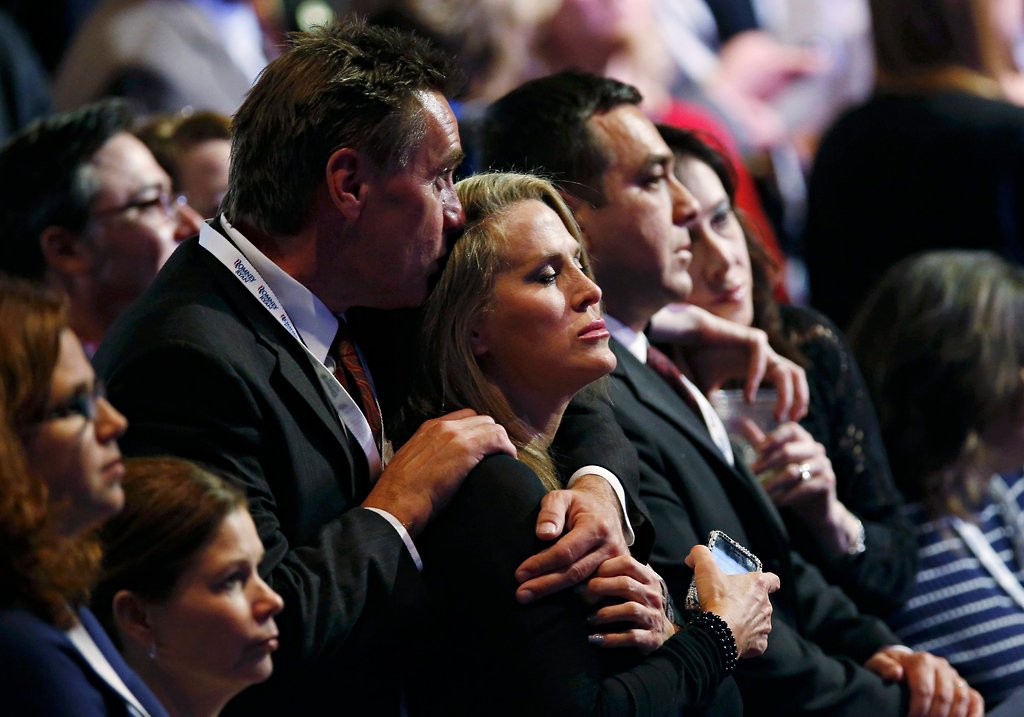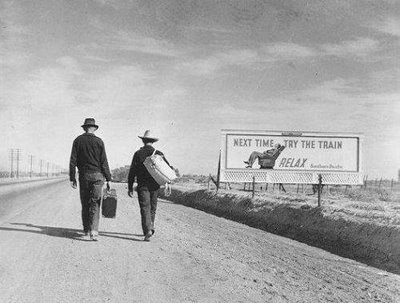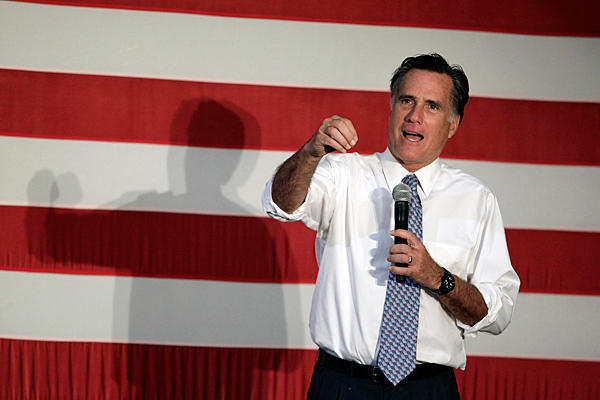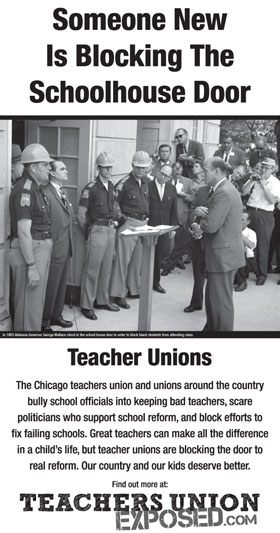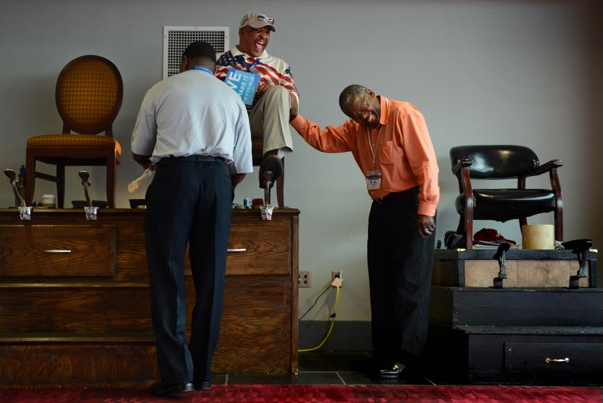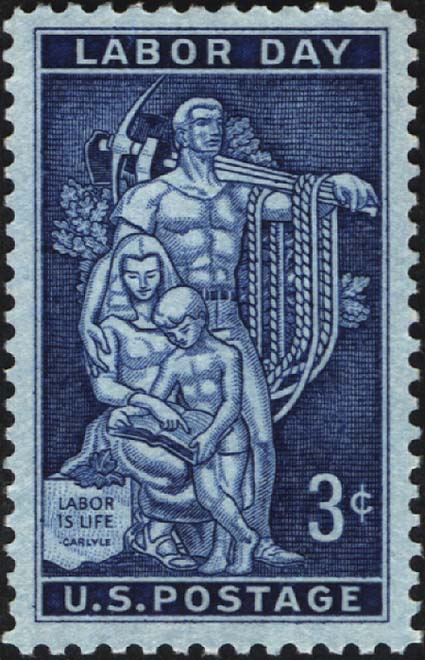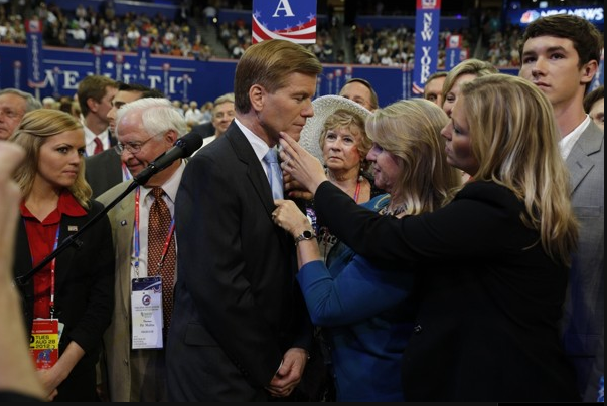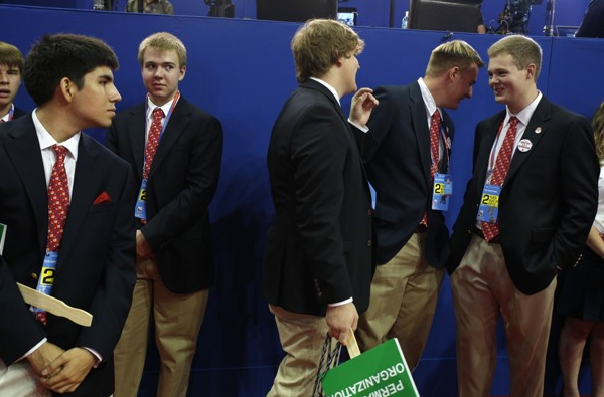Here’s the question: Is a compassionate response to this photograph justified, or would it be yet another extension of perhaps unmerited privilege?
The photo was taken at the Romney election night rally in Boston, but there are many like it to be seen in the papers this week, whether from Boston, Las Vegas, or other sites around the country. The style in which wealth is worn may vary a bit, but the basic profile is the same: affluent supporters of a certain age appear downcast, even mournful. Women tend to be featured, but that is typical when emotions are being featured regarding public events. The important constant is the affluence. Indeed, as Dana Milbank’s fine report on election night at the Romney gathering in Boston makes clear, the final celebration was to be for the few and the very few.
Which is why I can’t help but wonder: why are they so sad? These people clearly are society’s winners. Frankly, they don’t just look well off–they look damn good. I see attractive men and women who have had the benefit of good genes, money, education, connections, and everything else, and also had the discipline and other qualities to make good use of all those gifts. They are going to do well no matter what. Despite what Fox News might say, people of this class are not going to be beggared by Obama’s re-election, and they are likely to see their fortunes rise in the coming years due to the continuing economic recovery that was helped and will continued to be helped by his policies. Sure, they might have made more money and had more political influence had Romney won, but they will hardly have to do without. They will continue to prosper and to be taken seriously in their own sphere, so what is the problem?
Of course, elections do make a difference, as Rachel Maddow has pointed out brilliantly. But the progressive gains are not moves in a zero-sum game, and not not hurting people doesn’t mean that those who wouldn’t have been hurt now will be harmed. And note also that the emotional tableau in the image does not include anger. I can see how any player in American politics would be pissed about losing, but that’s not what we’re seeing here. Furthermore, since the Democratic victory ensures a commitment to caring for those in need, it can’t be that a Romney loss would provoke anguish for the plight of those not doing well. So, why would the rich grieve?
I can’t answer that question for want of experience or access to those who might know, although it does seem that one of the characteristics of American politics is that, for those involved, deep levels of personal identification are at stake. If self-interest is buffered by wealth–that is, if you are going to be well off, win or lose–and you still grieve the defeat of your candidate, that would seem to prove the point. Or one might claim that narcissism is the real cause, but while that might very well apply to Bill Reilly, Ann Coulter, Rush Limbaugh, and the like, I don’t think it holds here. (Note how one person in each of the two couples is tending to the other; these people seem capable of seeing beyond themselves.)
And so it turns out that my ruminations thus far have been a bit of a set up. I don’t know why they grieve, but it touches me that they do, and the pertinent question–for both the study of photography and the conduct of public life–is whether compassionate feeling for their pain is justified. After all, these are people who would have been celebrating if Romney had won, and Romney’s program was sure to spread misery downward while transferring even more wealth upward. And if the benefits of affluence help one feel for those in the picture–as one would be less likely to do if they were less attractive, for example–then isn’t that another systemic unfairness, another way in which those at the top get more than their share of whatever good thing is being distributed socially? And given all the contempt and condescension and vicious moralizing that has been directed against those in the bottom half, isn’t it fair to turn the tables during victory week? Well, yes and no.
The yes is because I’m among those who savors Gore Vidal’s great comment that “It is not enough to merely win. Others must lose.” Which is why, for example, I have loved seeing Karl Rove fall from political mastermind to $300,000,000 loser. Some people just have it coming, and the more they can make fools of themselves in public, the better.
But mostly no. The beauty of photography is that it can evoke a compassionate response regardless of other biases. Of course, sometimes those other considerations should prevail, but the problem is rarely that we are too quick to set them aside. And even if unable to understand the opposing political party, it might help us all if one could at least recognize that they, too, care about their beliefs. For where there is care, connection becomes possible.
Photograph by Jim Young/Reuters.
